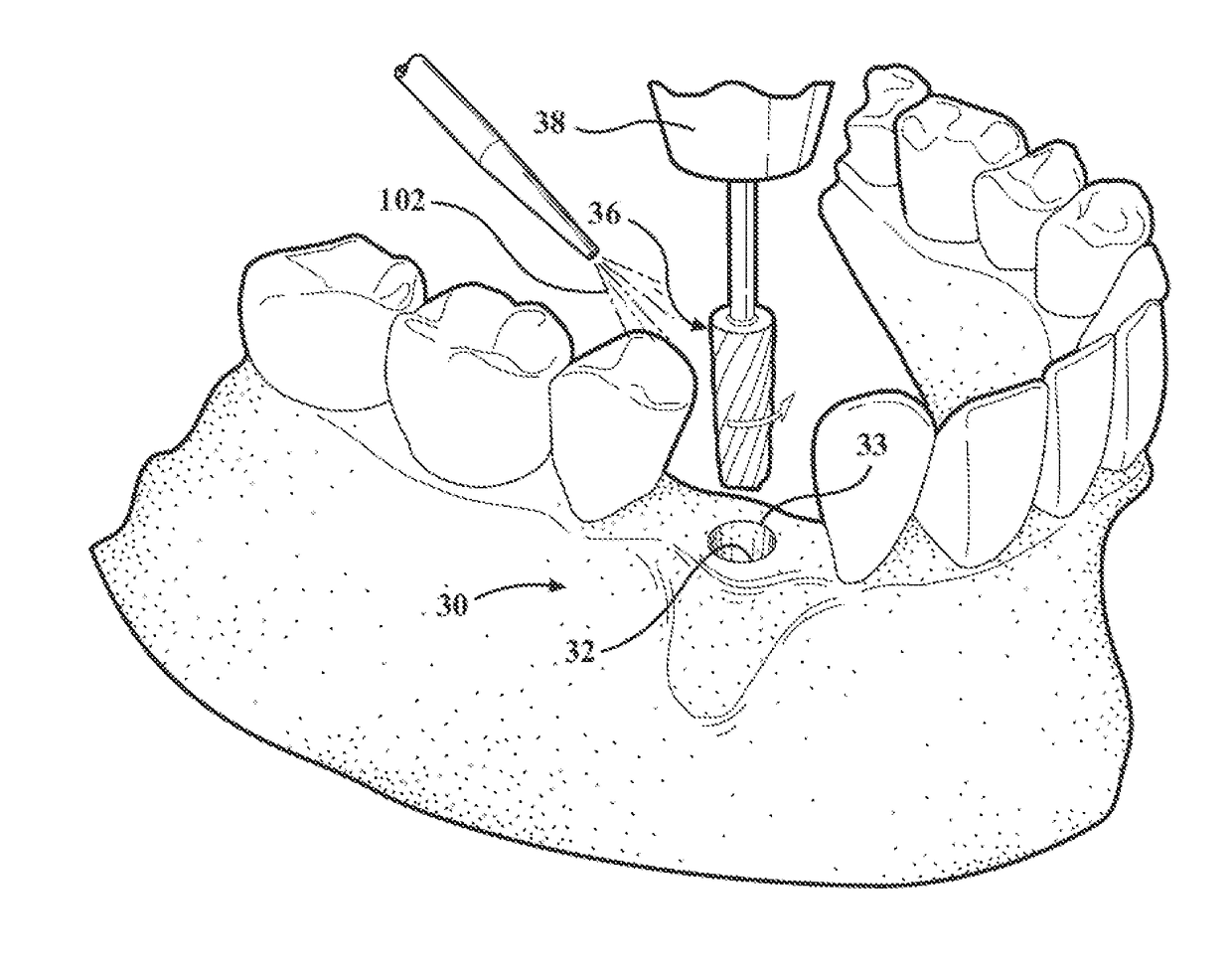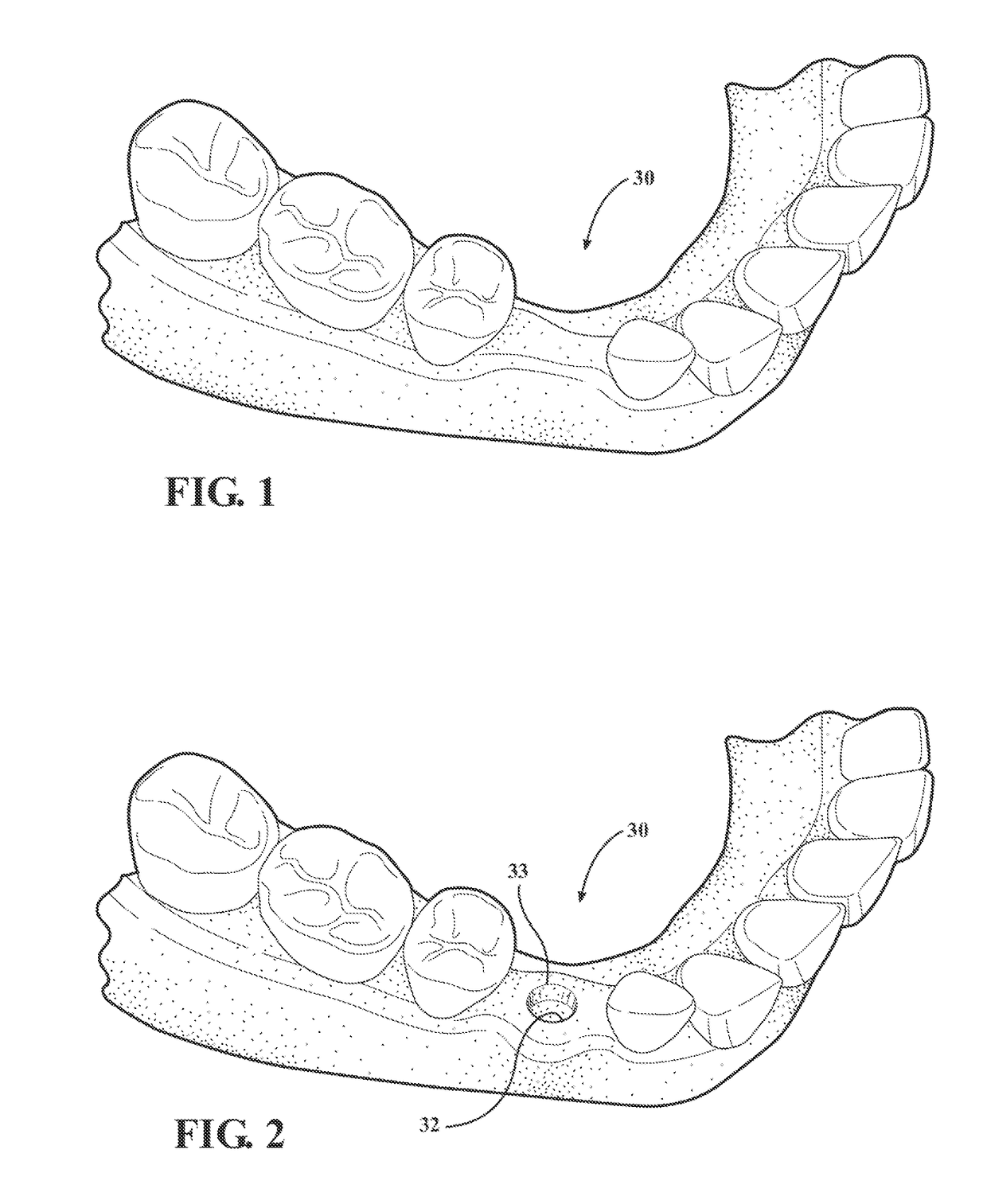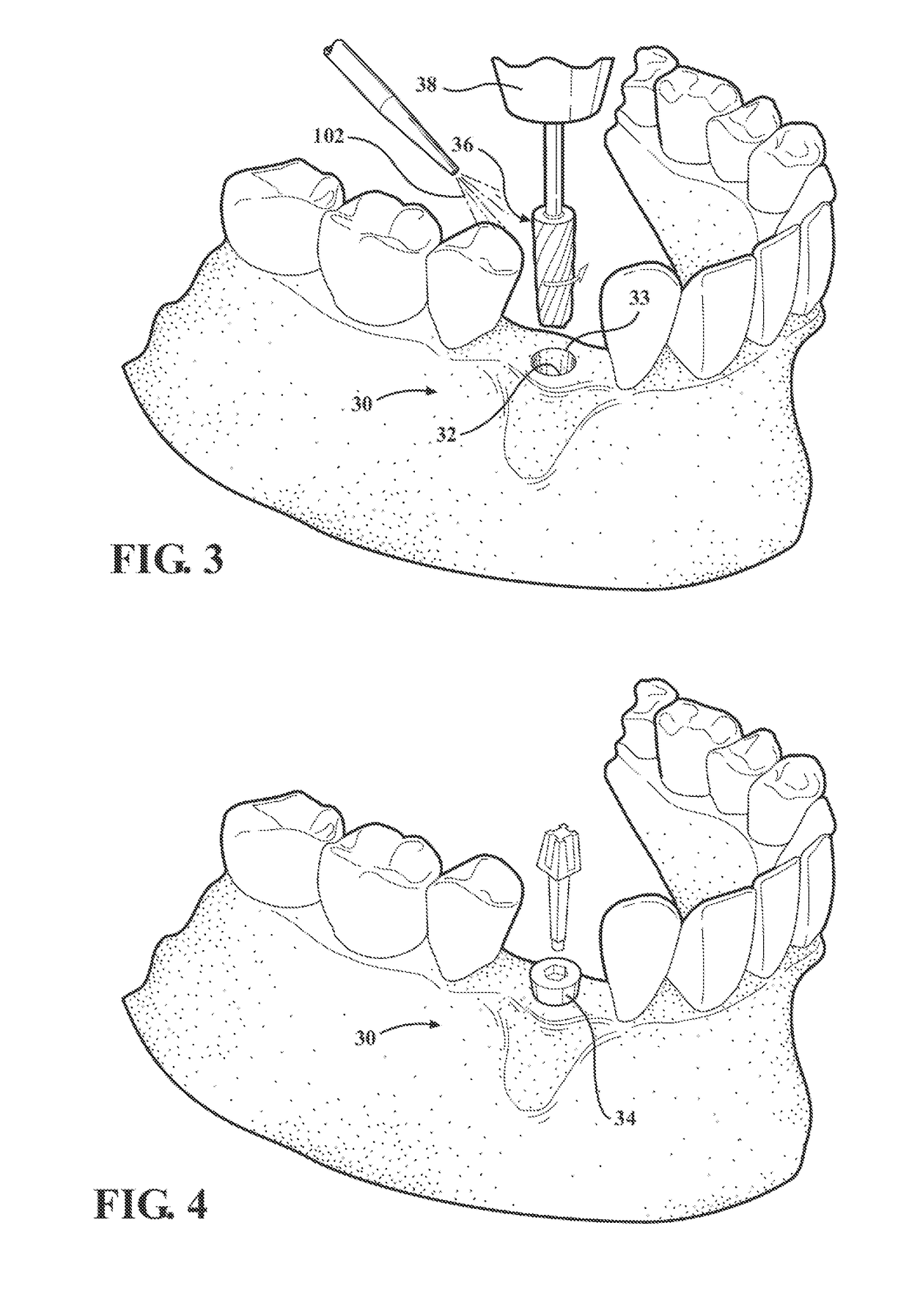Hydro-mechanical autografting tool and method of use
a technology of autografting and hydraulic force, applied in the field of rotary osteotomy, can solve the problems of affecting the treatment of mandibular site, affecting the healing effect of osteotomy, and the location of the bone may be wholly unsuitable for the violent impact of osteotomy, so as to achieve the effect of managing the expansion rate and enlarge the osteotomy
- Summary
- Abstract
- Description
- Claims
- Application Information
AI Technical Summary
Benefits of technology
Problems solved by technology
Method used
Image
Examples
Embodiment Construction
[0051]Referring to the figures, wherein like numerals indicate like or corresponding parts throughout the several views, FIGS. 1-4 show the example of a dental implant, in which preparation of an osteotomy is required to receive a bone implant (FIG. 4). It will be understood that this invention is not limited to dental applications, but may be applied across a wide spectrum of orthopedic applications. Furthermore, the invention is not even limited to bone applications, but may be used to prepare holes in other solid and cellular materials for industrial and commercial applications, to name but a few. In FIG. 1, an edentulous (without teeth) jaw site 30 is shown that needs expanded and prepared as an osteotomy 32 (FIG. 2) in order to receive an implant 34 (FIG. 4) or other fixture device. The series of steps include first boring a pilot hole into the recipient bone to form the initial osteotomy (not shown), then incrementally expanding the osteotomy using progressively wider rotary e...
PUM
 Login to View More
Login to View More Abstract
Description
Claims
Application Information
 Login to View More
Login to View More - R&D
- Intellectual Property
- Life Sciences
- Materials
- Tech Scout
- Unparalleled Data Quality
- Higher Quality Content
- 60% Fewer Hallucinations
Browse by: Latest US Patents, China's latest patents, Technical Efficacy Thesaurus, Application Domain, Technology Topic, Popular Technical Reports.
© 2025 PatSnap. All rights reserved.Legal|Privacy policy|Modern Slavery Act Transparency Statement|Sitemap|About US| Contact US: help@patsnap.com



